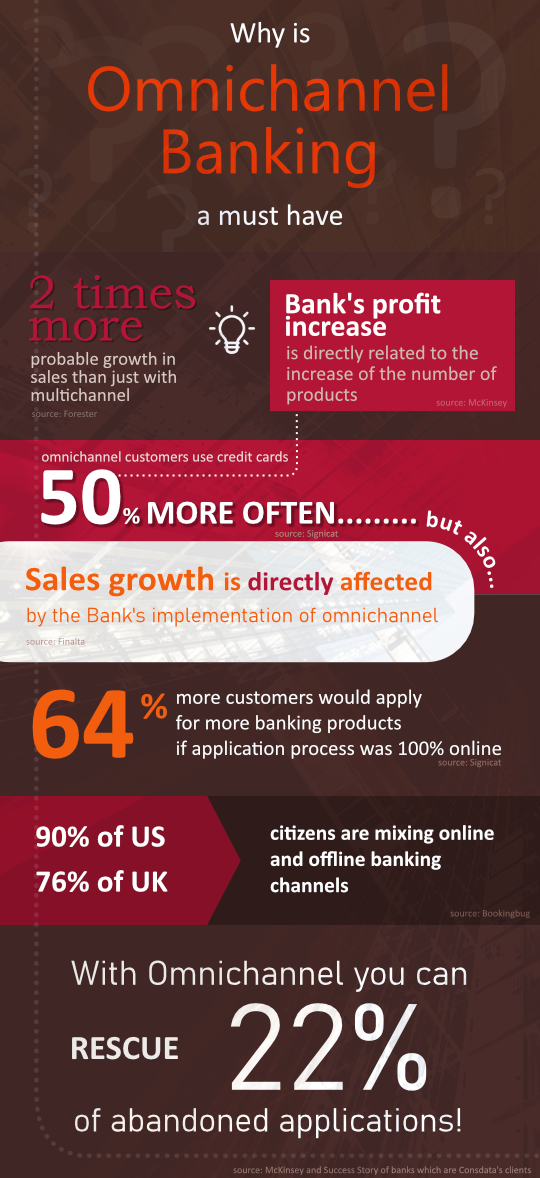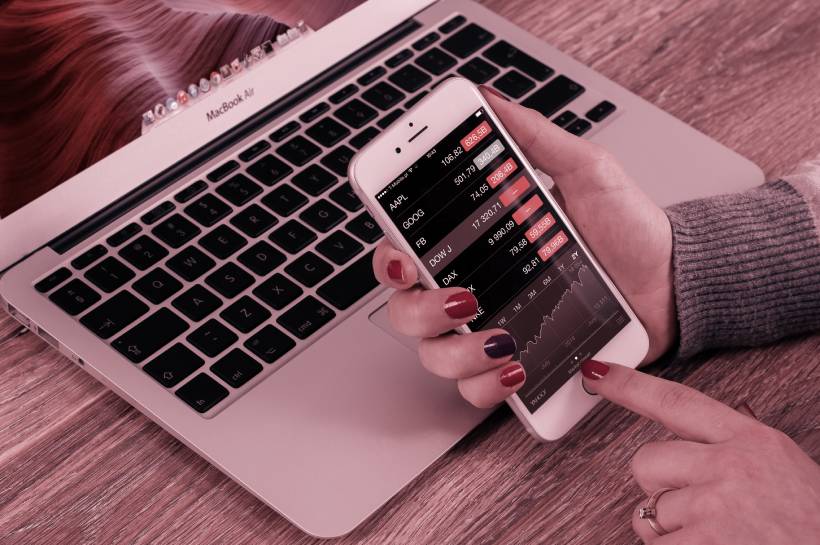Providing customers with omnichannel experience increases sales of banking products. This fact has been confirmed by research around the world. However, this truth has not been found out in banking sector. It hasn’t come out of thin air either - but from the retail sector.
Forrester predicts that within 2 years omnichannel in retail will be the universal, global standard. Now, if we combine this information with the conclusions from Capgemini’s "World Retail Banking Report 2018" (which tell us that bank customers expect the quality of service in banking such as they get it in the retail sector) we can safely say that for every bank the strategy of launching omnichannel banking is now a #musthave.
Omnichannel increases sales and profits of the bank
Forrester's research results for retail industry leave no room for doubts: the transition from multichannel to omnichannel increases the probability of customer satisfaction by 1.6x and increases the probability of sales growth by 2x. So if consumers are more satisfied and spend more money in stores, why not transfer this effect to banking? Especially since the money such customers spend is usually kept in banks. And if not, usually what they urgently need is nothing else but quick loan. Isn’t it exactly what banks are interested in?
McKinsey's own research conducted in 2016 confirmed that the increase in bank profit from a single client is directly proportional to the increase in the number of banking products owned by the customer. Moreover, as shown by Finalta's research, these data are directly related to the omnichannel - which has a direct impact on the growth of sales of banking products.
Omnichannel → increases sales of banking products → increases the profit on a single customer for the bank.
McKinsey did not stop there and analysed how often bank customers use products in terms of the number of contact channels they use. These results again demonstrate the advantages of the omnichannel. Turned out that customers with say a credit card use it twice as often when contacting a bank through multiple channels as those who do not have the habit of regular contact with the bank. They also use their credit card 50% more often than those who only use one channel to contact the bank.
So the above mentioned regularity finally goes as follows: Omnichannel → increases the sales of banking products → increases the frequency of using these products → increases the profit on a single customer for the bank.
Bank's customer behavior in the online and offline worlds
In 2018, BookingBug decided to investigate the behavior of bank customers by analyzing how they behave in shops. The study was based on an earlier observation of two typical attitudes of people: “webrooming” (searching online, purchase in shop) and “showrooming” (searching in shop, purchase online). For this purpose, the populations of the USA and the UK were studied and compared.
Once again, it turned out that the behavior of bank customers is similar to the behavior of shoppers. In the USA, 52% of people were qualified to the ROPB group (research online, purchase in branch), i.e. they searched for banking products on the internet and finally applied for them in a branch; whereas 38% were classified as RBPO (research in branch, purchase online), i.e. applying for banking products online, after a visit to a branch. The results for the UK were similar, although the difference was smaller between the two groups - 43% ROPB and 33% RBPO.
This study proves that many customers of today's banking do not rely solely on information obtained from one channel only. Instead, they compare these channels and choose the most convenient option for themselves. Does this sound like another reason for omnichannel in banking being a #musthave?
Omnichannel #musthave. How is this related to customer onboarding and other sales processes?
To the core. To show this, let’s reach for the results of AITE Group's research and combine them with Signicat's findings.
AITE Group found out that as much as 65% to 95% of customers - for any reason - abandon filling in bank applications in the middle of the process. We know it well, we call it conversion rate, and we usually use this term in sentences like “Can you do something to improve the conversion rate, please?”
Signicat, on the other hand, proves that conversion rate can be higher if banks implemented mechanisms that would allow for fully online application process. As much as 52% of respondents declare to be more likely to fill and submit the form if they could do this way. Moreover, 64% of customers would be more likely to even apply for additional banking products - only if they would not be required to deliver paper documents to a branch.
Moreover, from the McKinsey study mentioned previously we can also conclude that the conversion can be improved by allowing a customer to stop - or pause - the process at any time, and then return to it in any channel in order to resume. It’s easier to use a laptop at home, but in any other case it will be most likely a mobile device. Or maybe a branch nearby, where your customer will be offered a cup of coffee?
So if you provide your customers with perfectly customized sales processes... some people will leave the process anyway. However, market examples (not only from our customers) proves that using omnichannel combined with business analytics in such a situation allows recovering up to 22% of customers - thanks to proper use of online channels and call center.






